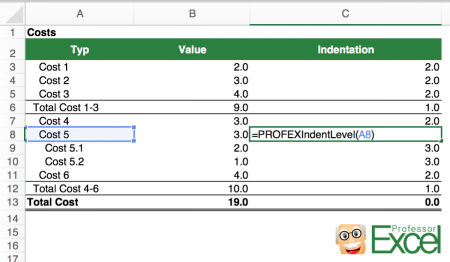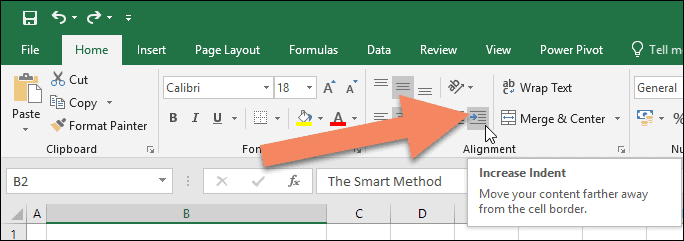When you think of indenting information, you normally think of a word processor. It is not unusual to indent paragraphs or specific lines of information on the screen. Excel, while definitely not a word processor, allows you to easily indent information within a cell.


I would like to apply conditional formatting based on the indentation of text in a cell. I have a chart of accounts in excel, with a parent-child hierarchy. I want to format all top-level parents (i.e. No indentation) with bold (or whatever formatting) then all second-level (i.e. One indent) with italics. Is this possible? Inserting Bullet Points using Keyboard Shortcuts. The fastest way to insert a bullet point is by using. Range.IndentLevel property (Excel); 2 minutes to read; o; O; K; J; S; In this article. Returns or sets a Variant value that represents the indent level for the cell or range. Can be an integer from 0 to 15. This shortcut increases the indent in a cell by one step each time it is used. On Windows, you can sometimes use Ctrl+Alt+Tab to indent and Ctrl+Alt+Shift+Tab to un-indent. However, The application switcher in Windows 7 seems to conflict with these shortcuts.

To set the indent to be used in a cell, follow these steps:
- Select the cells you want to format.
- Choose Cells from the Format menu. Excel displays the Format Cells dialog box.
- Make sure the Alignment tab is selected. (See Figure 1.)
- Using the Indent control, specify the number of characters by which the cell contents should be indented. You can pick any whole number between 0 and 15.
- Click on OK.
Figure 1. The Alignment tab of the Format Cells dialog box.
Each number of indent moves the contents of the cell about one character width to the right. (There goes that strange character measurement system in Excel again.) You can also control the indentation of cell contents by using the two indent tools on the Formatting toolbar. Each click of a tool moves the cell contents one position to the left or right.

I would like to apply conditional formatting based on the indentation of text in a cell. I have a chart of accounts in excel, with a parent-child hierarchy. I want to format all top-level parents (i.e. No indentation) with bold (or whatever formatting) then all second-level (i.e. One indent) with italics. Is this possible? Inserting Bullet Points using Keyboard Shortcuts. The fastest way to insert a bullet point is by using. Range.IndentLevel property (Excel); 2 minutes to read; o; O; K; J; S; In this article. Returns or sets a Variant value that represents the indent level for the cell or range. Can be an integer from 0 to 15. This shortcut increases the indent in a cell by one step each time it is used. On Windows, you can sometimes use Ctrl+Alt+Tab to indent and Ctrl+Alt+Shift+Tab to un-indent. However, The application switcher in Windows 7 seems to conflict with these shortcuts.
To set the indent to be used in a cell, follow these steps:
- Select the cells you want to format.
- Choose Cells from the Format menu. Excel displays the Format Cells dialog box.
- Make sure the Alignment tab is selected. (See Figure 1.)
- Using the Indent control, specify the number of characters by which the cell contents should be indented. You can pick any whole number between 0 and 15.
- Click on OK.
Figure 1. The Alignment tab of the Format Cells dialog box.
Each number of indent moves the contents of the cell about one character width to the right. (There goes that strange character measurement system in Excel again.) You can also control the indentation of cell contents by using the two indent tools on the Formatting toolbar. Each click of a tool moves the cell contents one position to the left or right.
Excel Shortcut Indent In Cell
If you have set up a cell so that text wraps within the cell, then indentation affects all the lines of text within the cell—not just the first line.
